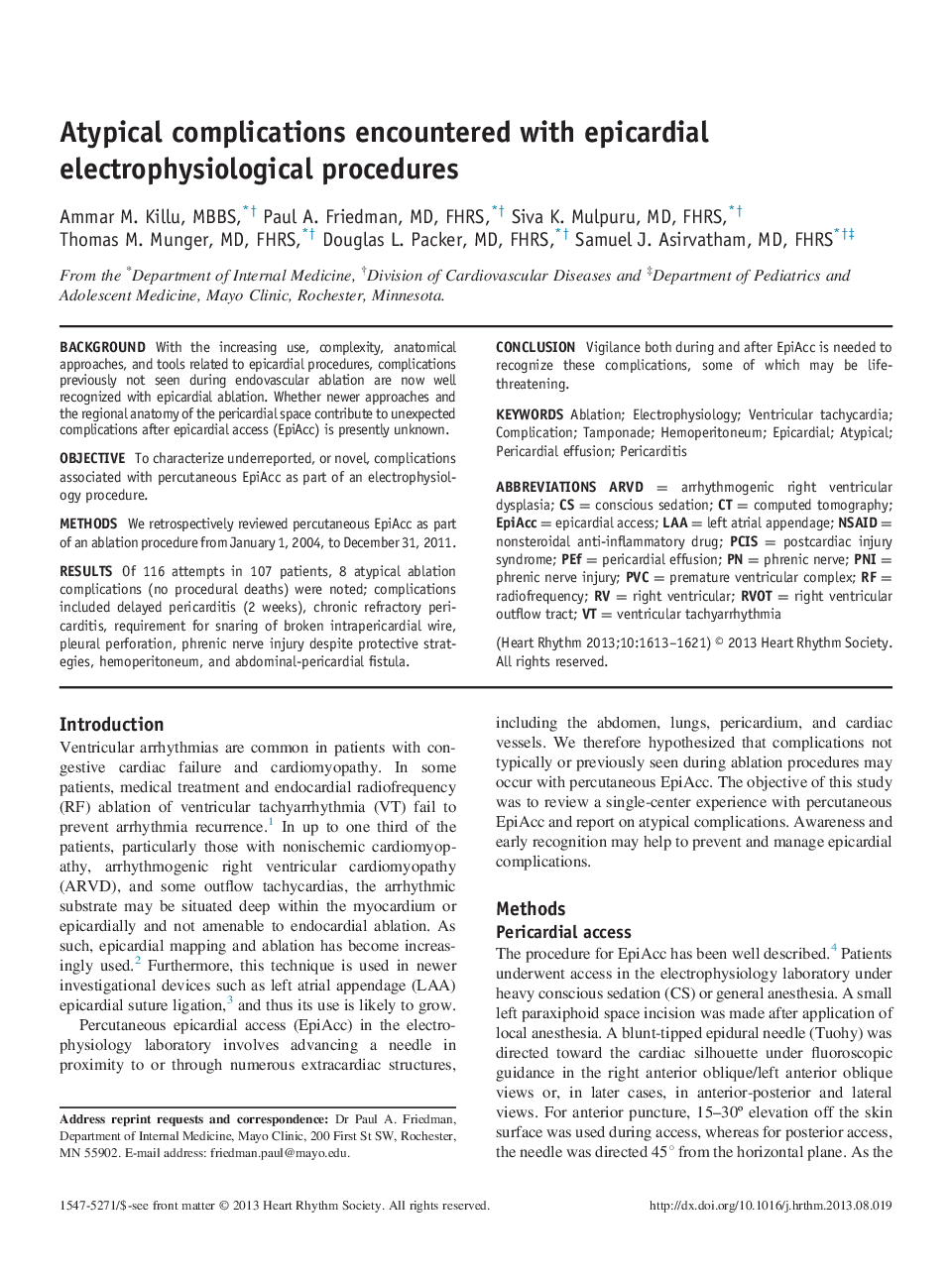| Article ID | Journal | Published Year | Pages | File Type |
|---|---|---|---|---|
| 2922101 | Heart Rhythm | 2013 | 9 Pages |
BackgroundWith the increasing use, complexity, anatomical approaches, and tools related to epicardial procedures, complications previously not seen during endovascular ablation are now well recognized with epicardial ablation. Whether newer approaches and the regional anatomy of the pericardial space contribute to unexpected complications after epicardial access (EpiAcc) is presently unknown.ObjectiveTo characterize underreported, or novel, complications associated with percutaneous EpiAcc as part of an electrophysiology procedure.MethodsWe retrospectively reviewed percutaneous EpiAcc as part of an ablation procedure from January 1, 2004, to December 31, 2011.ResultsOf 116 attempts in 107 patients, 8 atypical ablation complications (no procedural deaths) were noted; complications included delayed pericarditis (2 weeks), chronic refractory pericarditis, requirement for snaring of broken intrapericardial wire, pleural perforation, phrenic nerve injury despite protective strategies, hemoperitoneum, and abdominal-pericardial fistula.ConclusionVigilance both during and after EpiAcc is needed to recognize these complications, some of which may be life-threatening.
